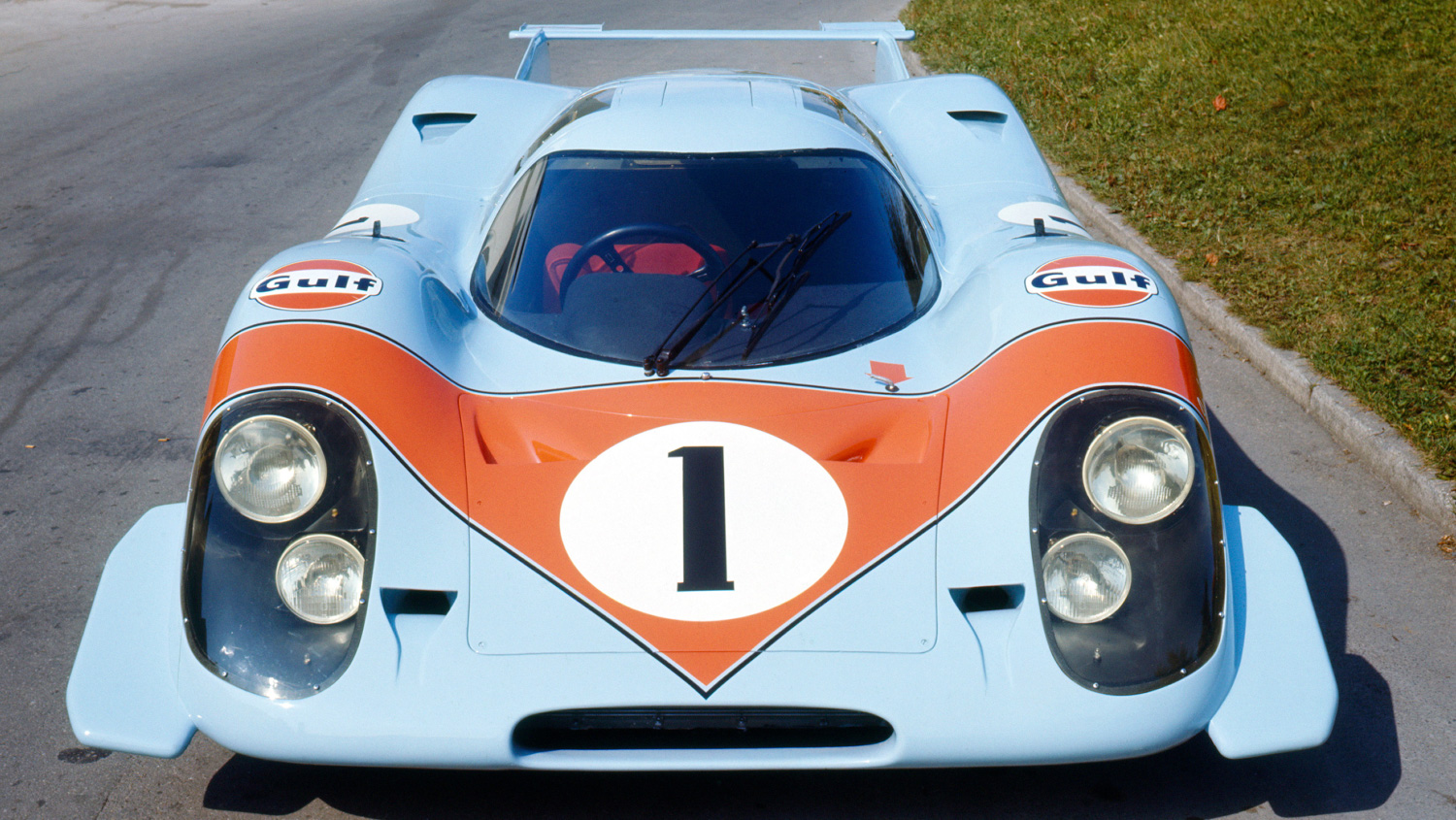Porsche honors 50 years of the 917, unveils meticulously restored original prototype
Fifty years ago today, one of the most significant racing cars to ever compete on a track made its world debut at the Geneva Motor Show—the Porsche 917. To commemorate that anniversary, the Porsche Museum in Stuttgart, Germany, just announced that it will be staging a special 917 exhibit that will be on display from May to September. The centerpiece of that exhibit is the first 917-001 prototype and presentation car, which Porsche restored to its original specs, just as it was on the stand at Geneva in 1969. Joining 917-001 will be nine other 917s and the first public appearance of a stunning new modern 917 design concept.
Porsche is calling the 917 “the most famous racing car of all time.” Some folks in Modena, Hethel, and Dearborn might quibble with that characterization, but there is no doubt that the all-conquering 917 was a landmark in racing history. With a flat 12-cylinder engine designed by Hans Metzger, who also headed the overall design of the 917, the car was created with one goal in mind: to dominate the 1970 24 Hours of Le Mans and the Brand World Championships. The 917 met that goal and then some.
Porsche 917-001 was the first of 25 cars built to meet FIA homologation requirements. One reason why Porsche is emphasizing “original condition” is that 917-001 underwent a number of changes, starting soon after its reveal. The original livery at the Geneva show was white with a green front end. For the Frankfurt show later that year, it was repainted white and orange. It raced and won at Le Mans wearing #23 and painted red and white. When John Wyer took over the management of Porsche’s racing activities, 917-001 was again resprayed, this time in the iconic light blue and orange livery of team sponsor Gulf Oil.




Changes to 917-001 weren’t just cosmetic. Following its debut victory at Le Mans, the car was rebodied to the short-tail version and turned over to a Salzburg Porsche dealer. There was a time when retired race cars were discarded, considered obsolete. Today they are historic and collectible, with 917s among the most expensive cars in the world.
Restoration took more than a year, and the museum brought in retired technicians and engineers who had worked on the original 917 project at Porsche’s Zuffenhausen and Weissach facilities to help the museum’s mechanics maintain historical accuracy.
With the goal of restoring the 001 to original condition, Porsche used material analysis and historical documentation to determine what body parts were original and which had changed over the years. Modern 3D-printing technology and the original design blueprints were used to recreate parts of the front and rear sections that had been modified. Those blueprints were also used to restore the vehicle’s aluminum space frame.

The original iteration of the 917 that won at Le Mans in 1970, with Hans Herrmann and Richard Attwood at the wheel, did so again in 1971, driven by Dr Helmut Marko and Gijs van Lennep. Further development of the 917 into the turbocharged 917/10 and 917/30 versions gave the car over 1000 horsepower, allowing George Follmer and Mark Donohue to dominate the 1972 and 1973 CanAm series in North America. Lessons learned from those vehicles contributed to the development of the first turbocharged Porsche road car, the 1975 911 Turbo.
The 917 concept study was created as an homage to Porsche’s 1970 Le Mans victory. In the photos released, the windows and headlights are blacked out, so it’s likely (at least at this point) that the unnamed concept is a clay or fiberglass model, not a running car. It is painted in the same red and white scheme of the Le Mans winner and carries its #23. Porsche says that it was designed by “a small team of designers and engineers,” but it suggests that the work may have been done a while ago. Porsche says that’s because when its race program entered into the FIA World Endurance Championship’s LMP1 category, the 917 concept remained on the shelf as a design study.
The Porsche Museum exhibit, called “Colours of speed—50 Years of the Porsche 917,” opens on May 15 and runs through September 15. The museum gift shop will have special 917-themed memorabilia on sale, including a pink barbecue apron inspired by the famous “Pink Pig” 917/20 that raced in 1971 with a butcher-shop-inspired paint scheme.





